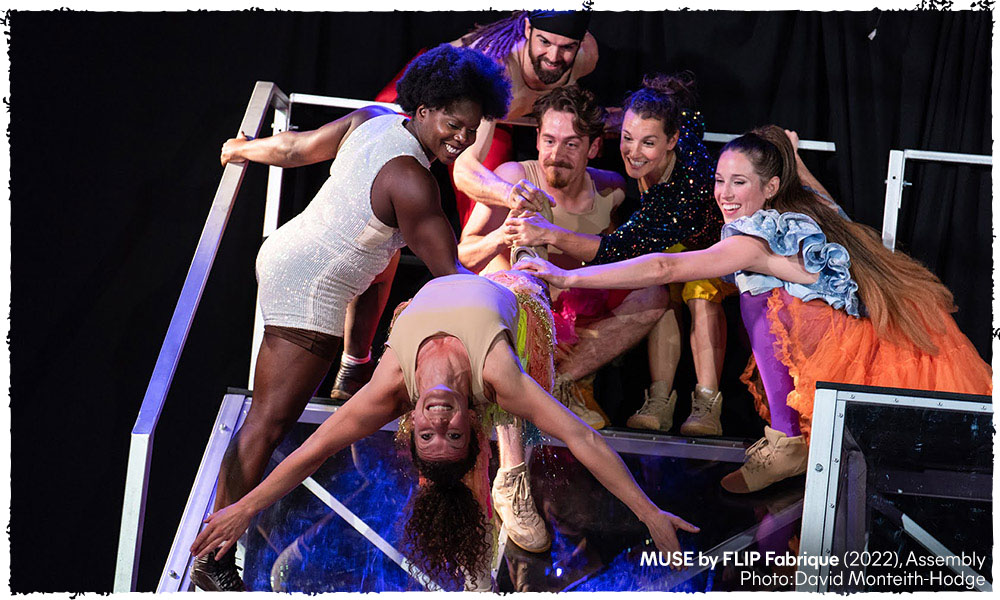Not sure where to start?
What is the Edinburgh Festival Fringe?
The Fringe is an open access arts festival, which means that anyone who has a story to tell and a venue to perform in can put on a show here.

There is no centralised selection process and the festival as a whole is not programmed or curated (though individual venues choose which shows they want to programme). The Edinburgh Festival Fringe Society does not produce or select any shows, does not invite anybody to perform and does not cover costs. We are here to provide you with the support, guidance and resources necessary to tell your story. Read more about the story of the Fringe and the Fringe Society.
Why perform at the Fringe?
There are hundreds of reasons why artists and performers come to the Fringe. Many are looking for exposure, to try out and develop new material in front of a live audience, or to get reviews and media coverage. Many aim to connect with people in the arts industry with the hope to find touring opportunities, to earn money and to network with fellow performers. Coming to the Fringe is often part of performers’ longer-term career plan, but it can just as easily be about working on stagecraft and having fun.
The Fringe is a proven training ground where some of today’s most popular entertainers got their start. It’s also home to one of the most adventurous audiences in the world – an audience that, along with the paying public, includes producers, promoters, journalists and fellow artists.
Ready to begin?
Before you set about bringing your show to the Fringe, it’s important to ask yourself: why? What would be the value of the Fringe to you? All of the outcomes we mentioned above are possible, though usually not at the same time.
Remember that the Fringe is a competitive environment – there are thousands of shows, all vying for the same audience. We recommend you make a list of clear, achievable goals you want to work towards. This will not only help you direct your energy during the festival – it will inform every decision you make, from choosing a venue to planning your marketing campaign. Define what Fringe success would look like to you.
For example, you might want to aim at filling a smaller, less conventional venue than you’re accustomed to, or making initial contacts in the industry rather than immediately attracting tour bookings. Misjudging your goals could prove financially costly and make for a negative experience during August.
Three steps to setting your goals
1. Identify your goals and objectives
Your goal is unique to you and your show – no-one else can set it for you. Think about why you've decided to bring the show to the Fringe in the first place and what you want to leave the Fringe with.
Feel free to use some of the examples above to get you started, eg developing new material or getting reviews and media coverage. If you have multiple goals, list them in order of priority – which one is most important above all?
2. Build a strategy to achieve your goal
Once you have set your goal(s), you need to build a strategy around them. Think about the different steps that it would take to achieve your goal, then work these into your Fringe plans. What can you do before, during and after the Fringe?
If you are struggling to form a strategy, you can complete our Artist Development prep sheet to book a one-to-one and get bespoke advice from our team.
3. Putting it into practice
Below are some suggestions of actions you can take that can help you achieve your Fringe goals:
- Attend professional development events on Fringe Connect and at Fringe Central during August to upskill your practice, learn more about the industry and build knowledge of what the future holds for venues and organisations. You can also catch up with previous event recordings.
- Find artists and professionals to connect with and build collaborations using the People page on Fringe Connect.
- Use this website to find resources around different ways to network, developing your tour pack and more.
- Book a one-to-one with our team:
Complete the Artist Development prep sheet
What to do and when
Fringe handbooks
Everything you need to know is on this website, but if you want to browse offline or at your own pace, the handbooks below can be downloaded in PDF format.
- The Fringe guide to registering a show
- The Fringe sustainability toolkit
- The Fringe programme style guide
- The Fringe fundraising handbook
We're here to help!
Please get in touch with [email protected] if you have any specific questions about the information on this page. A member of our team can set up a 10-minute slot to talk things over with you on the phone or on a video call.Please note, slots are based on team availability.
